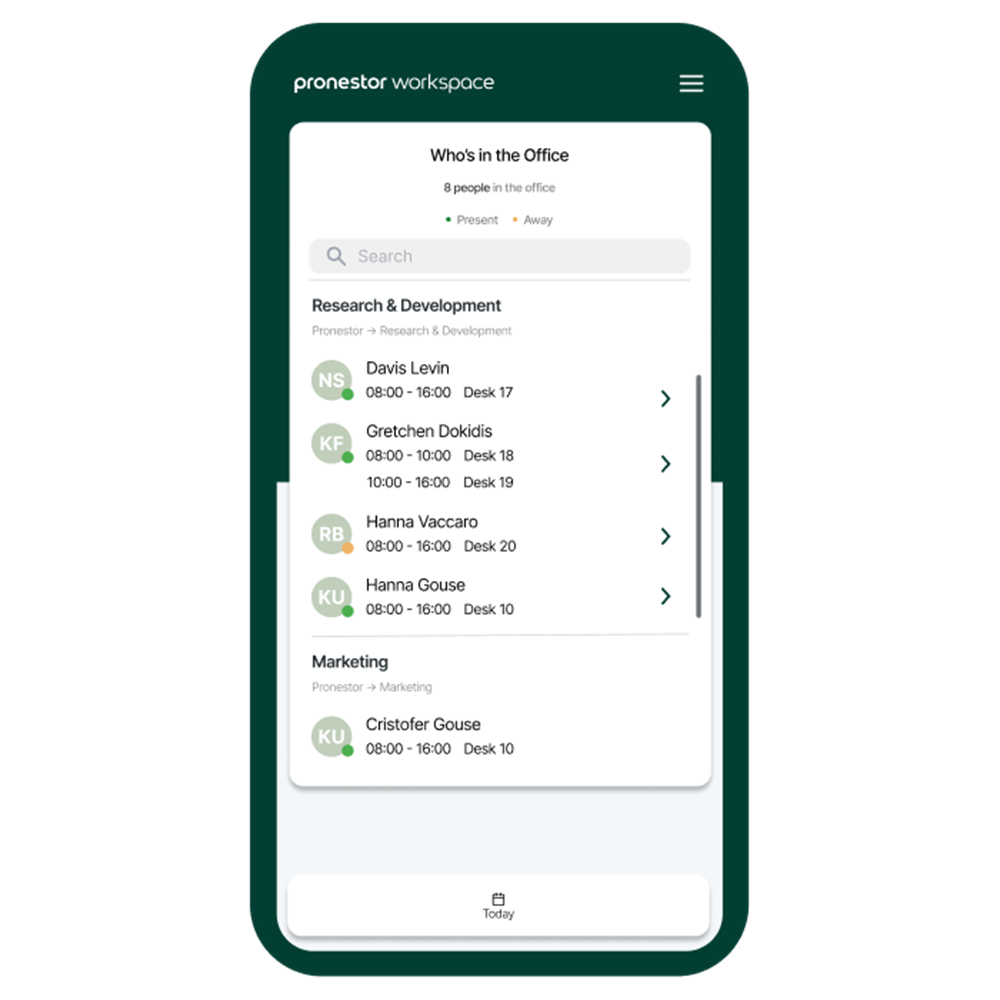March 24, 2022
— Karsten Busck (CEO)
How your business can benefit from the hybrid work model
How can your organization benefit from transitioning to the hybrid work model? Find out what hybrid work is and three ways you will benefit from it in this article.

As the return to the office is slowly under way, the hybrid work model is becoming more common. A lot has been said about the flexibility hybrid work provides to the employees, but the question remains; how can organizations benefit from the hybrid work model?
In this article I will go over three ways in which your business will benefit from the hybrid work model, but before we get to that, let’s take a quick look at what the hybrid work model is.
What is hybrid work?
There are several different hybrid work models but in short, hybrid work is when employees switch between working from home and working from the office.
In most cases employees are allowed to choose whether they work from home or at the office for themselves, although organizations often put a limit on the number of remote days allowed. Some even opt to implement a fixed hybrid work model where everyone works from the office on specific days.
Hybrid work is often complimented by activity-based work formats, which means employees can work from home on days where they need to focus on specific tasks, and then use the office for activity-based tasks such as collaboration, project launches, brainstorming sessions etc.
Further some organizations implement hybrid work in a way where some employees are either hybrid or even fully in the office, while other employees are remote full time.
In the end, hybrid work isn’t one-size-fits all. Which version works best will depend on your organization, your employees, and your culture.
3 ways your business will benefit from hybrid work
There are several ways businesses can benefit from the hybrid work model, and while they all depend on which type of hybrid work model you choose, there are three benefits to going hybrid which are present in every possible hybrid setup:
- Healthier and happier employees
- Lower environmental impact
- Cost reduction
The hybrid work model will give you healthier and happier employees
Over the past couple of years many surveys have shown that working from home has a positive impact on work-related stress, so it’s no surprise that both employers and employees are becoming increasingly positive towards remote and hybrid work. *
One of the reasons why employees experience reduced stress levels when working from home, is related to fewer distractions during the workday and a better work-life balance.
According to a US survey on flexible work 75% think that remote work helps reduce stress and improve productivity, while 71% think that the possibility of working from home helps reduce commute-related stress. *
The increased flexibility of choosing where you work, not to mention the time gained by not having to commute to and from the office, gives employees more time outside of work.
With the average commute in Europe being around 25 minutes each way, employees working from home gain an average of 50 minutes every day they chose work from home instead of going to the office. *
So, working from home just two days a week gives the employee almost two hours which they can spend with their families or on hobbies as they see fit.
Some argue that the level of innovation in a workplace may be reduced, because innovation requires a physical presence, but creativity and innovation doesn’t necessarily happen in the office between 8AM and 4PM, so while collaboration may be a key element when it comes to innovative processes, what’s probably more important than in-person collaboration is happy employees.
After all stress and burn-out doesn’t usually lead to innovative break throughs.

Reducing the employee commute will lower your environmental impact
In 2019 personal cars accounted for more than 60% of transportation related CO2 emissions across Europe.
Now, the average one-way commute in Europe is around 25 minutes, * and at the same time, an average car emits 118 grams of CO2 per kilometer driven. *
This means that, at a speed of 60 km/h, the average commute emits 2950 grams of CO2, and that’s just getting to the office.
Going back home would emit the same amount of CO2.
Following this train of thought, if 10 employees work from home, instead of taking the car to work, for just one day over the course of the year, they will reduce carbon emissions by 59kg.
Now imagine if you had hundreds of employees, who worked from home twice a week. That becomes a figure worth mentioning when you need to report on your company’s environmental impact.
The hybrid work model lets you reduce the cost of maintaining an office
Whenever we say “cost reduction” it usually means that someone, somewhere will suffer. A manager gets a tighter budget, and a perk is eliminated, or maybe someone is let go.
That’s the way it usually works. But when it comes to the hybrid work model, you can reduce your spending, while improving the lives of your employees too.
But how does the hybrid work model help you reduce spending, you may ask?
One way would be to reduce the number of desks in your office. It could mean fewer expenses on equipment such as docks, desks, and monitors.
But fewer people in the office at the same time will also allow you to reduce the number of workstations. Fewer workstations mean you won’t need as big of an office space which could impact your rent, and your spending on utilities, either because you could move to a smaller office with a lower rent, or because you can start renting out workstations in your current office.
You don’t need space for 100 employees if you only seat 70 at any one time. But even if you don’t want to reduce your office size, going hybrid can still impact your budget through things such as fewer sick days, and even reduce employee turnover. *
Your only obstacle is making sure that your office space is used to its full potential, and that’s where things like a hot desk booking app comes in handy.

Going hybrid?
You can now try Pronestor Workspace, our desk booking app completely free of charge. The trial lasts for 14 days, which gives you plenty of time to find out how it helps you and your team schedule working from home or the office letting you transition to hot desking and hybrid work without any added friction.
What does hot desking mean in business?
In business, hot desking is often implemented along with the transformation to a hybrid work model, and a reduced-size office policy, where the number of total employees is higher than the number of desks in the office.
When people say hot desking (or flexible desking), they usually refer to a setup where some or all employees share desks between them, instead of each employee having their own, personal desk.
Another use of the word “hot desking” is when referring to a specific way of booking desks in a hybrid workplace: In this case hot desking refers to desks that are booked on the spot, as opposed to desks that are booked before going to the office.
References:
https://www.pwc.com/us/en/library/covid-19/us-remote-work-survey.html
https://www.flexjobs.com/blog/post/flexjobs-2018-annual-survey-workers-believe-flexible-remote-job-can-help-save-money-reduce-stress-more/
https://www.europarl.europa.eu/news/en/headlines/society/20190313STO31218/co2-emissions-from-cars-facts-and-figures-infographics
https://ec.europa.eu/eurostat/web/products-eurostat-news/-/ddn-20201021-2


